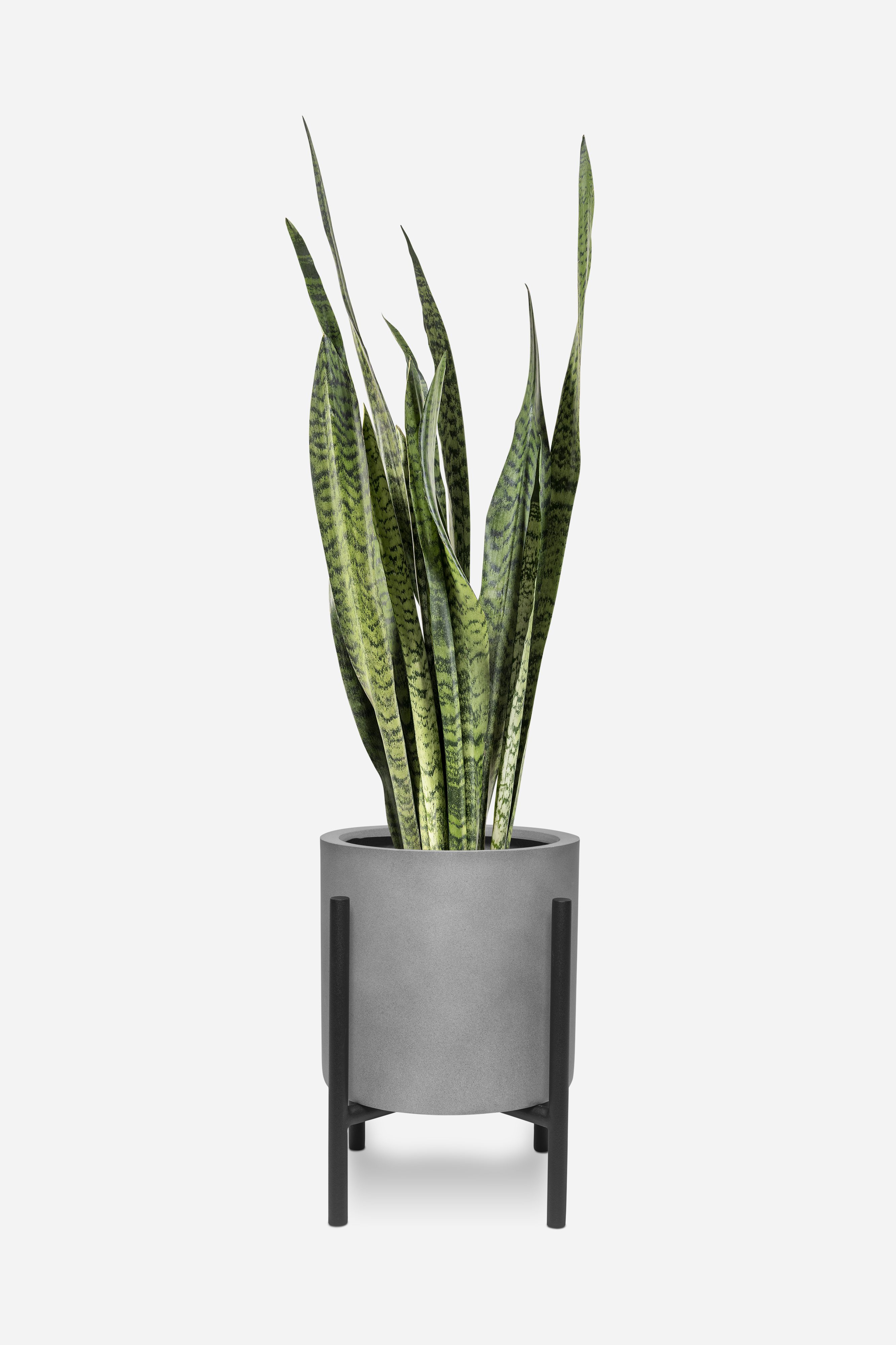
By: Wendie J. Appel
How does the picture of trees at the top of this post make you feel?
Do you find that your breathing slows? Maybe you even took in a nice, long breath and then exhaled. (I did.)
In our more-is-more, fast-paced, screen-saturated world, finding moments of calm can sometimes feel incredibly challenging. Yet, one of the simplest and most accessible ways to soothe our nervous systems might be right in front of us — or just a glance away.
Nature, even when we experience it through images, colors, or indoor plants, has a powerful effect on our brain chemistry and emotional well-being by reducing stress and helping regulate our nervous systems.
A Biophilic Connection
Humans have innate attractions to nature, a concept scientists call biophilia — the idea that our minds and bodies are wired to seek connections with the natural world. This connection is biological. For millennia, humans survived by paying close attention to natural cues: the color of leaves, the sound of water, the rhythm of the seasons. Our nervous systems evolved in constant interaction with the environment.
Modern life has pulled many of us away from that natural rhythm. Concrete, screens, and artificial lighting dominate. This disconnect can leave our brains in a heightened state of alertness, more prone to stress and anxiety.
But there is a simple remedy for this. Glimpses of nature — through a window, a photo, or a leafy houseplant — can signal safety to our brains and help calm our stress responses.
How Nature Imagery Affects Brain Chemistry
Even just viewing plant-rich images — like a close-up of a leaf or the gentle green of indoor plants — can shift our nervous systems toward calm. In one illuminating study, participants shown natural images after a stress-inducing task experienced improved autonomic recovery, measured by higher heart rate variability (HRV) and increased parasympathetic activity (the branch of the nervous system associated with rest and restoration) compared to the results of participants who viewed urban scenes.
In other words, even simple glimpses of greenery can help reset our systems more quickly after stress — a beautiful reminder of how accessible and impactful nature imagery can be for our well-being. Like this lush photo:

Lowering Cortisol Levels
Cortisol is often called the “stress hormone.” When we’re anxious or overwhelmed, cortisol levels rise, triggering the classic fight-or-flight response. Studies have found that looking at images of forests, water, or natural landscapes can reduce cortisol levels in the body, helping us shift out of that heightened stress state. What do you think?
One experiment showed that hospital patients with views of trees recovered faster and reported less pain than those looking at brick walls — proving that even passive exposure to natural imagery has measurable effects.
Activating the Parasympathetic Nervous System
The nervous system has two primary branches: the sympathetic, which revs us up (fight or flight), and the parasympathetic, which helps us relax and restore. Viewing nature images has been found to stimulate the parasympathetic system, promoting a state of calm and recovery.
This can lead to slower heart rate, reduced blood pressure, and a feeling of groundedness. Sounds pretty great, right?
Enhancing Focus and Reducing Mental Fatigue
Spending time looking at nature — or even pictures of it — can restore mental energy. The theory behind this is called Attention Restoration Theory (you can take a deep dive into the theory here. Essentially, it suggests that natural environments engage our attention effortlessly, unlike the focused, intense concentration many of us need for work or screens.
This gentle engagement helps the brain recover from cognitive fatigue, leaving us more refreshed and able to concentrate afterward.
Nature Indoors: The Power of Bringing Green Inside
If you live in a city or spend long hours inside, you might feel cut off from the natural world. But there are easy ways to bring nature’s benefits inside, even if you don’t have a garden or outdoor view.

Houseplants and Indoor Gardens
Adding greenery to your home or workspace can improve air quality and create a calm atmosphere. Beyond aesthetics, the simple presence of plants has been linked to reduced stress, increased productivity, and better mood. If you hesitate to do this because you kill houseplants, might I recommend a Mother-in-Law’s Tongue (also known as a Snake plant). This plant was one of the plants featured in NASA’s 1989 Clean Air Study, which found it removes a whole bunch of toxins. Plus, it tolerates low light (yes, even that dark corner that sits sadly empty), infrequent watering, and converts CO2 to oxygen at night, so it makes a great bedroom plant. You can almost “set it and forget it.” But don’t forget to look at it, that’s the whole point!
The act of caring for a plant — watering, trimming, watching it grow — also creates a gentle rhythm that connects us to living cycles.
Nature Imagery and Art
If you’re short on space or don’t want houseplants, consider surrounding yourself with nature-inspired art or photographs. Images of flowers, close-ups of leaves, and visuals of forests, oceans, and mountains can provide similar calming effects. Like this:

Some studies suggest that viewing images of water is especially soothing — our brains are hardwired to find water calming because it historically signaled a safe environment for survival.
Natural Light and Colors
Wherever you can, maximize natural light during the day. Light helps regulate our circadian rhythms and mood. When we don’t get enough natural light, our systems feel confused. This can manifest in a variety of ways, including grogginess, irritability, and lack of focus.
Decorating your space with natural colors — soft greens, earthy browns, sky blues — can subtly influence how relaxed you feel. Little changes add up.
How to Incorporate Nature Imagery Into Your Daily Life
You don’t have to overhaul your entire space or spend hours outdoors to benefit.
Here are simple ways to weave nature imagery and elements into your routine:
- Desktop backgrounds or phone wallpapers: Choose photos or digital art of calming nature scenes. Every glance can be a tiny reset.
- Mindful viewing: Spend a few minutes intentionally looking at a plant, a photo, or even a nature video, focusing on the details without multitasking.
- Nature sounds: Pair images with soft background sounds like rain or bird songs to deepen relaxation.
- Virtual nature walks: When going outside isn’t possible, guided videos of forests or beaches can still activate calming brain responses.
- Art exploration with nature themes: Draw or paint leaves, flowers, or landscapes. This combines creativity and nature exposure for double the benefits. Tiny Art Stories invites you to The Studio or Art in the Park, two great ways to dip your toes in your creative well with no pressure, but everything you need, including gentle guidance.
Why It Matters for Mental Health and Wellness
Mental health wellness is aided when we build environments and habits that support emotional resilience every day. Nature imagery offers an accessible, evidence-backed way to support this, especially for those who can’t always access the outdoors.
By integrating natural elements visually, we gently remind our nervous systems that there is safety, rhythm, and restoration available. This can be especially helpful for anyone feeling overwhelmed, anxious, or emotionally exhausted.
Inviting nature imagery into your indoor spaces is a simple, effective way to help balance stress chemistry and nourish your mental health.
So, go ahead, pick a favorite nature photo or a small plant and spend a few moments with it each day. Notice how it shifts your mood or breath.
Create a little ritual, listen to bird sounds, and take a mindfulness minute break and look at images of plants.
 I recommend Plant Recipe by Baylor Chapman. You can’t help but relax when looking at the 50 shades of green on the pages of this book. Gorgeous images to soothe your soul and feast your eyes.
I recommend Plant Recipe by Baylor Chapman. You can’t help but relax when looking at the 50 shades of green on the pages of this book. Gorgeous images to soothe your soul and feast your eyes.
Connect with your natural instinct to seek the stillness of growing things. Your brain already knows the way; you just need to give yourself the gift of green.
Sign up for our newsletter for advance notice of virtual and in-person workshops to create your own collection of leaf and flower paintings. Come be surprised!

No comments yet.